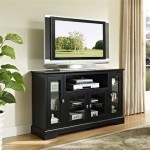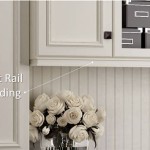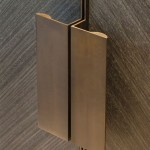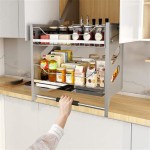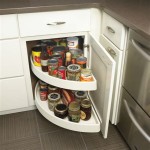How Cabinet Refacing Works: A Comprehensive Guide
Cabinet refacing is a popular kitchen remodeling option that allows homeowners to update the appearance of their cabinets without the expense and disruption of a complete cabinet replacement. It involves replacing the existing cabinet doors and drawer fronts, while applying a new veneer to the exposed surfaces of the cabinet boxes. This process offers a cost-effective way to revitalize the kitchen's aesthetic, providing a fresh, modern look while utilizing the existing cabinet infrastructure.
The process of cabinet refacing is generally less disruptive and time-consuming compared to a full cabinet replacement. Homeowners can often continue to use their kitchen during the refacing process, minimizing inconvenience. It also allows for customization of the kitchen's style and design through various door styles, finishes, and hardware options. This method can be a suitable solution for those who are satisfied with the existing layout of their kitchen but desire a visual upgrade.
Key Point 1: Understanding the Core Components of Cabinet Refacing
The success of cabinet refacing hinges on a clear understanding of its core components. These components are the existing cabinet boxes, the new cabinet doors and drawer fronts, and the veneer used to resurface the exposed cabinet surfaces. Each element plays a crucial role in achieving a successful and aesthetically pleasing result.
The existing cabinet boxes must be structurally sound for cabinet refacing to be a viable option. If the boxes are damaged or deteriorated beyond repair, a full cabinet replacement may be the more appropriate course of action. However, if the boxes are in good condition, they provide a solid foundation for the new refaced elements. The condition of the boxes should be carefully assessed before proceeding with the refacing process. The assessment includes checking for warping, water damage, and structural integrity.
The new cabinet doors and drawer fronts are the most visible element of the refacing process. Selecting the right style, material, and finish is critical to achieving the desired aesthetic. Options include various wood species, laminate, and thermofoil. The style can range from traditional raised panel to modern flat panel designs. The finish options are equally diverse, including stains, paints, and glazes. Choosing the right combination of these factors is essential for creating a cohesive and visually appealing kitchen.
The veneer is applied to the exposed surfaces of the cabinet boxes, providing a seamless and unified look with the new doors and drawer fronts. Matching the veneer to the color and texture of the new doors and drawer fronts is essential for a professional-looking result. Veneer options include wood veneer, laminate, and rigid thermofoil (RTF). The application process requires careful preparation and precise execution to ensure a smooth and durable finish. Proper adhesion is critical to prevent peeling or bubbling over time.
Key Point 2: The Step-by-Step Refacing Process
The cabinet refacing process typically involves several distinct steps, each requiring careful attention to detail. These steps include preparation, removal of old components, surface preparation, veneering, installation of new doors and drawer fronts, and hardware installation.
Preparation: The first step is to thoroughly clean the existing cabinets. This involves removing all items from the cabinets and cleaning the surfaces with a degreasing cleaner to remove dirt, grease, and grime. Proper cleaning is essential for ensuring proper adhesion of the veneer.
Removal: The next step is to remove the existing cabinet doors, drawer fronts, hinges, and hardware. All existing hardware should be removed, and the door and drawer fronts carefully detached. It is important to retain any hardware that will be reused, such as hinges or drawer slides, and to properly dispose of the old doors and drawer fronts.
Surface Preparation: The exposed surfaces of the cabinet boxes must be properly prepared to ensure a smooth and even surface for the veneer. This typically involves sanding the surfaces to remove any existing finish and create a slightly rough texture to promote adhesion. Any imperfections, such as scratches or dents, should be filled with wood filler and sanded smooth. After sanding, the surfaces should be thoroughly cleaned to remove any dust or debris.
Veneering: The veneer is then applied to the exposed surfaces of the cabinet boxes. The veneer is typically pre-cut to the appropriate size and shape. It is then applied using a contact adhesive or other appropriate adhesive. The veneer should be carefully aligned and pressed firmly onto the surface to ensure a strong bond. Any excess veneer should be trimmed with a sharp utility knife. Edges should be carefully smoothed and sealed to prevent peeling or chipping.
Installation of New Doors and Drawer Fronts: Once the veneer has been applied and allowed to dry, the new cabinet doors and drawer fronts can be installed. The doors and drawer fronts are attached using new hinges and drawer slides. Proper alignment is essential to ensure that the doors and drawers open and close smoothly. Adjustments may be necessary to achieve proper alignment.
Hardware Installation: The final step is to install the new hardware, such as knobs, pulls, and handles. The hardware should be selected to complement the style of the new doors and drawer fronts. The hardware should be carefully installed according to the manufacturer's instructions. Proper placement of the hardware is important for both aesthetics and functionality.
Key Point 3: Materials and Cost Considerations
Selecting the right materials for cabinet refacing is crucial for achieving both the desired aesthetic and the desired level of durability. The cost of cabinet refacing can vary depending on the materials used, the size of the kitchen, and the complexity of the project. Understanding the different material options and their associated costs is essential for making informed decisions.
Wood Veneer: Wood veneer is a thin layer of real wood that is applied to the cabinet boxes. It offers a natural wood look and feel, and is available in a variety of wood species. Wood veneer is generally more expensive than laminate or RTF veneer, but it can provide a more high-end appearance. It requires careful application and finishing to protect it from moisture and damage. Wood veneer can be stained or painted to achieve the desired color and finish.
Laminate Veneer: Laminate veneer is a synthetic material that is designed to mimic the look of wood or other finishes. It is more durable and water-resistant than wood veneer, and is also less expensive. Laminate veneer is available in a wide variety of colors and patterns. It is easy to clean and maintain, making it a practical choice for kitchens. However, it may not have the same authentic look and feel as real wood.
Rigid Thermofoil (RTF) Veneer: RTF veneer is a type of laminate that is applied to the cabinet boxes using heat and pressure. It is a durable and seamless option that is resistant to scratches, stains, and moisture. RTF veneer is available in a variety of colors and textures. It is a cost-effective option that provides a clean and modern look. However, it may not be as heat-resistant as other materials.
Cabinet Doors and Drawer Fronts: The choice of cabinet doors and drawer fronts can significantly impact the overall cost of the refacing project. Solid wood doors are generally the most expensive option, while laminate and RTF doors are more affordable. The style of the doors, such as raised panel or flat panel, can also affect the cost. The size and number of doors and drawer fronts will also influence the overall cost.
Hardware: The cost of hardware, such as knobs, pulls, and handles, can also vary significantly. High-end hardware made from solid brass or other premium materials can be quite expensive, while more basic hardware made from less expensive materials is more affordable. The number of knobs, pulls, and handles needed will also impact the overall cost.
In addition to material costs, the cost of labor should also be considered. Hiring a professional contractor to perform the cabinet refacing can add to the overall cost, but it can also ensure a high-quality result. The cost of labor will depend on the complexity of the project, the size of the kitchen, and the contractor's rates. Obtaining multiple quotes from different contractors is recommended to get a competitive price.
Overall, understanding the different material options and their associated costs is essential for making informed decisions about cabinet refacing. By carefully considering the various factors that can impact the cost of the project, homeowners can create a budget that meets their needs and expectations.

Kitchen Cabinet Refacing By Improveit

How Does Kitchen Cabinet Refacing Work

What Is Cabinet Refacing A Step By Guide To Transform Your Kitchen Tune Up Annapolis

Kitchen Cabinet Refacing Nhance Wood Refinishing Central Oregon

Kitchen Cabinet Refacing A Quick Cost Effective Remodel Solution

Refinishing Vs Kitchen Refacing American Wood Reface

Refacing Vs Replacing Cabinets Which Is Better For Your Kitchen Guilin

Kitchen Cabinet Refacing Makeover A Homeowner S Experience

Delta Cabinetry Of New Orleans Cabinet Refacing

Reface Your Kitchen Cabinets Easy Diy Remodel Youtube

